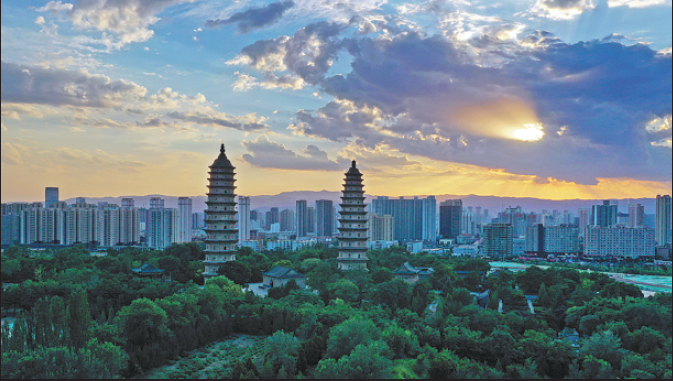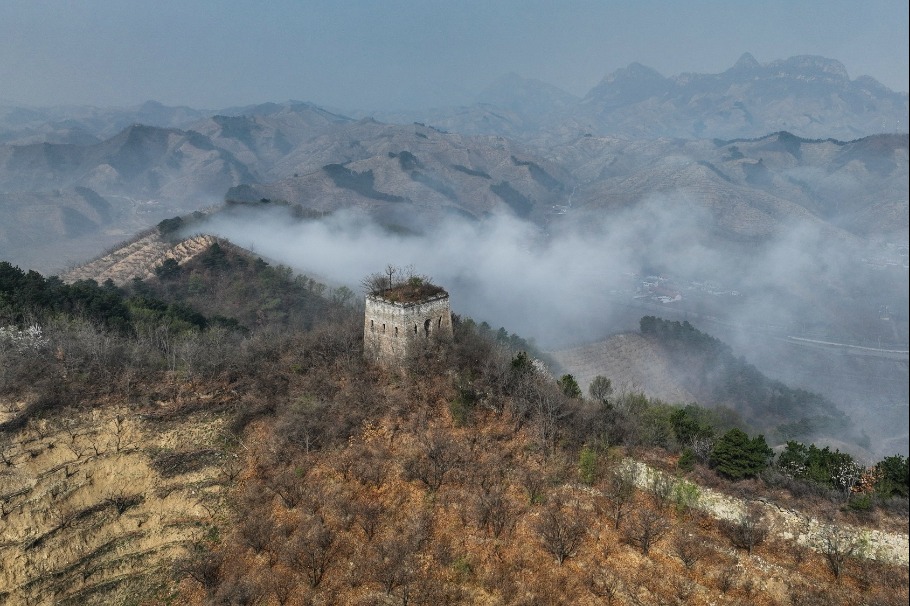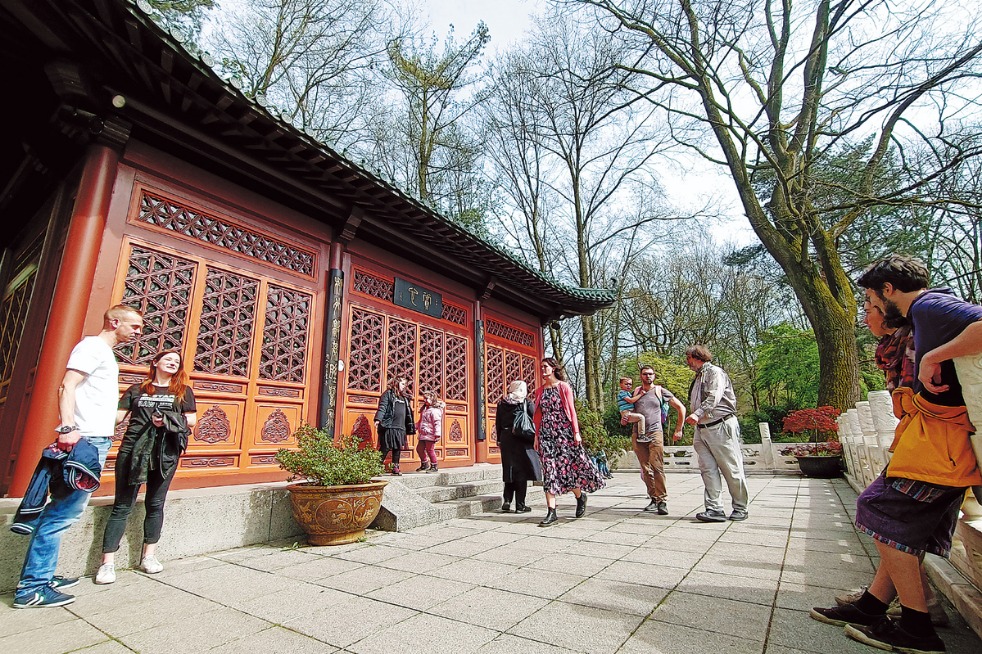Double pagodas of Taiyuan standing tall 400 years on


Historic landmark exhibits innovative and unique features of Ming Dynasty architecture
The double pagodas at Yongzuo Buddhist Temple have been standing as landmarks of Taiyuan, the provincial capital of Shanxi, for some four centuries and remain a major attraction in the city today.
The double pagodas are so famous that locals in Taiyuan usually refer to the temple as Double Pagodas Temple, and will even hesitate when asked where Yongzuo Temple is.
The tallest preserved pagodas in the nation, the beamless hall built in the Ming Dynasty (1368-1644), the stone tablets with inscriptions of renowned calligraphic works from past centuries, and the peonies planted in the Ming Dynasty are the four major selling points of the temple, according to a local official in charge of tourism.
Lu Ling, the temple's official, said the two pagodas were built in the late Ming Dynasty and early Qing Dynasty (1644-1911).
The official said the temple was divided into upper and lower gardens. The upper garden is called the Pagoda Garden because it is where the double pagodas are located.
The pagoda in the south is called the Peak of Culture Pagoda, which was built under the sponsorship of Fu Lin, a local scholar and official during the Ming Dynasty.
It is said the construction of the Peak of Culture Pagoda was aimed to lifting Taiyuan's status as a cultural city and improving the "cultural fortune" of the sponsor's family.
Coincidentally, several decades after the construction, Fu's grandson Fu Shan became one of the country's top scholars, poets, calligraphers and painters of his time.
The story has made the temple a favorite among local intellectuals and residents who wish for good academic fortune for their children.
After weathering winds and rains for four centuries, the Peak of Culture Pagoda became a leaning tower with a gradient of 2.86 meters in the last century, according to Lu.
"A team led by ancient architecture master Cao Shizhong repaired the tower in 1995, which rectified the gradient to 0.86 m," Lu said.
The pagoda in the northwest is called Xuanwen Pagoda, and was built by famed Buddhist monk Miaofeng several years after the completion of the Peak of Culture Pagoda.
In addition to the pagoda, the majority of the structures in Yongzuo Temple were built under the supervision of Miaofeng.
- Spotted seal numbers on rise in Liaoning
- Xi puts forth four principles to resolve Ukraine crisis
- Xi meets Scholz, highlighting mutual benefits, win-win outcomes
- Quanzhou Bay bridge to receive 2024 engineering honor
- China's railway passenger transportation continues with steady growth
- China's top legislature schedules upcoming standing committee session




































